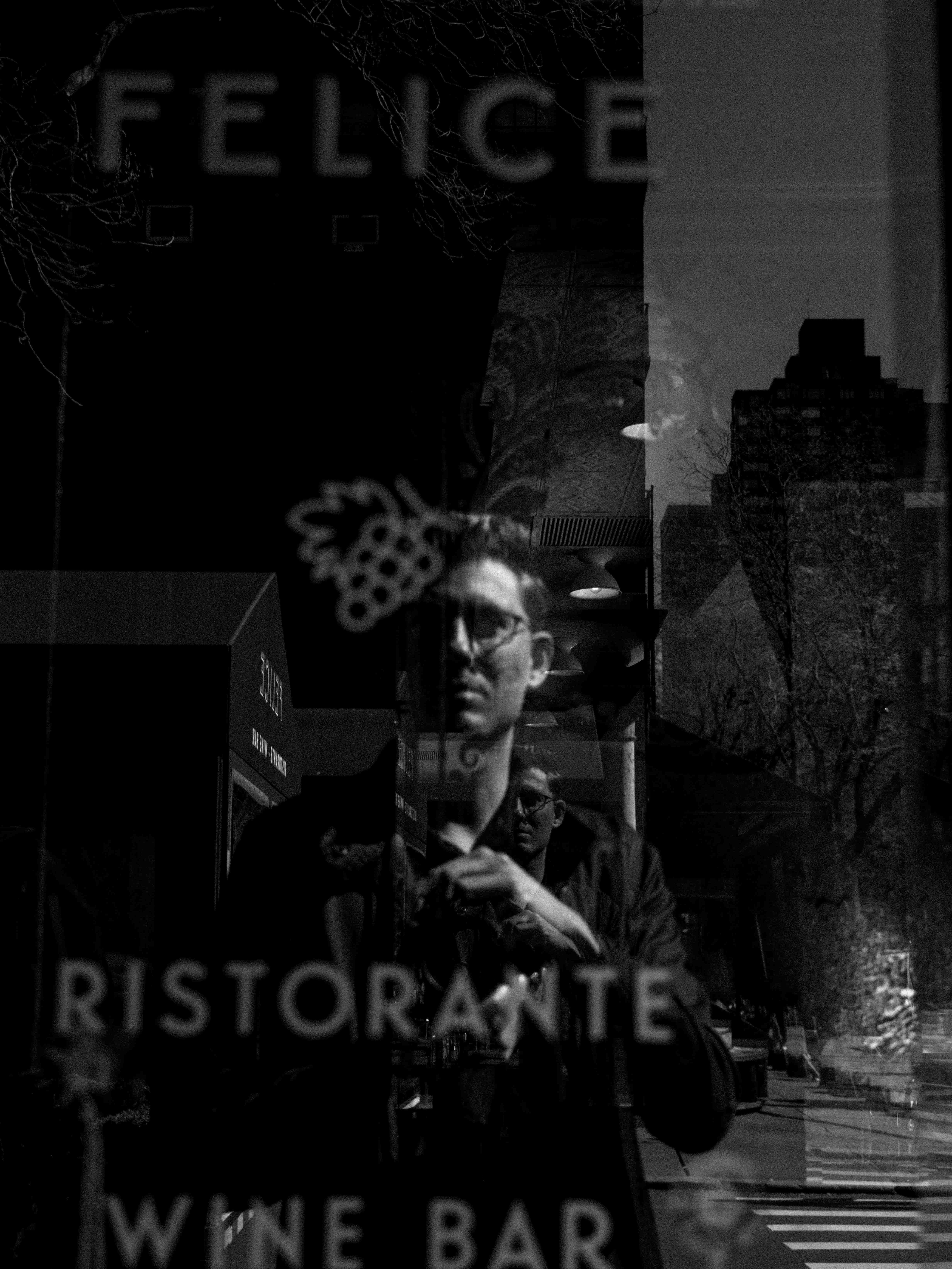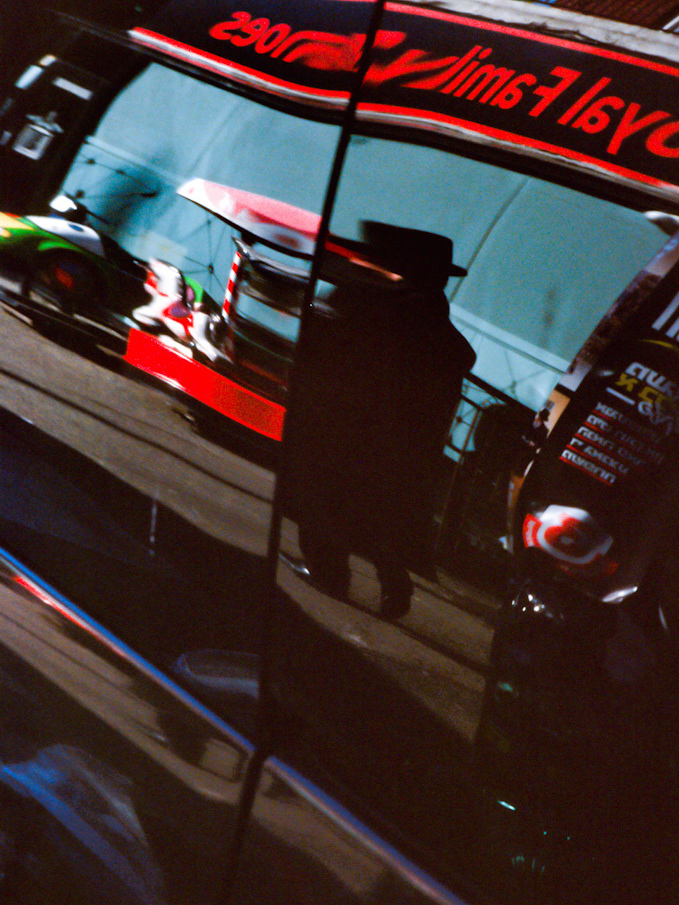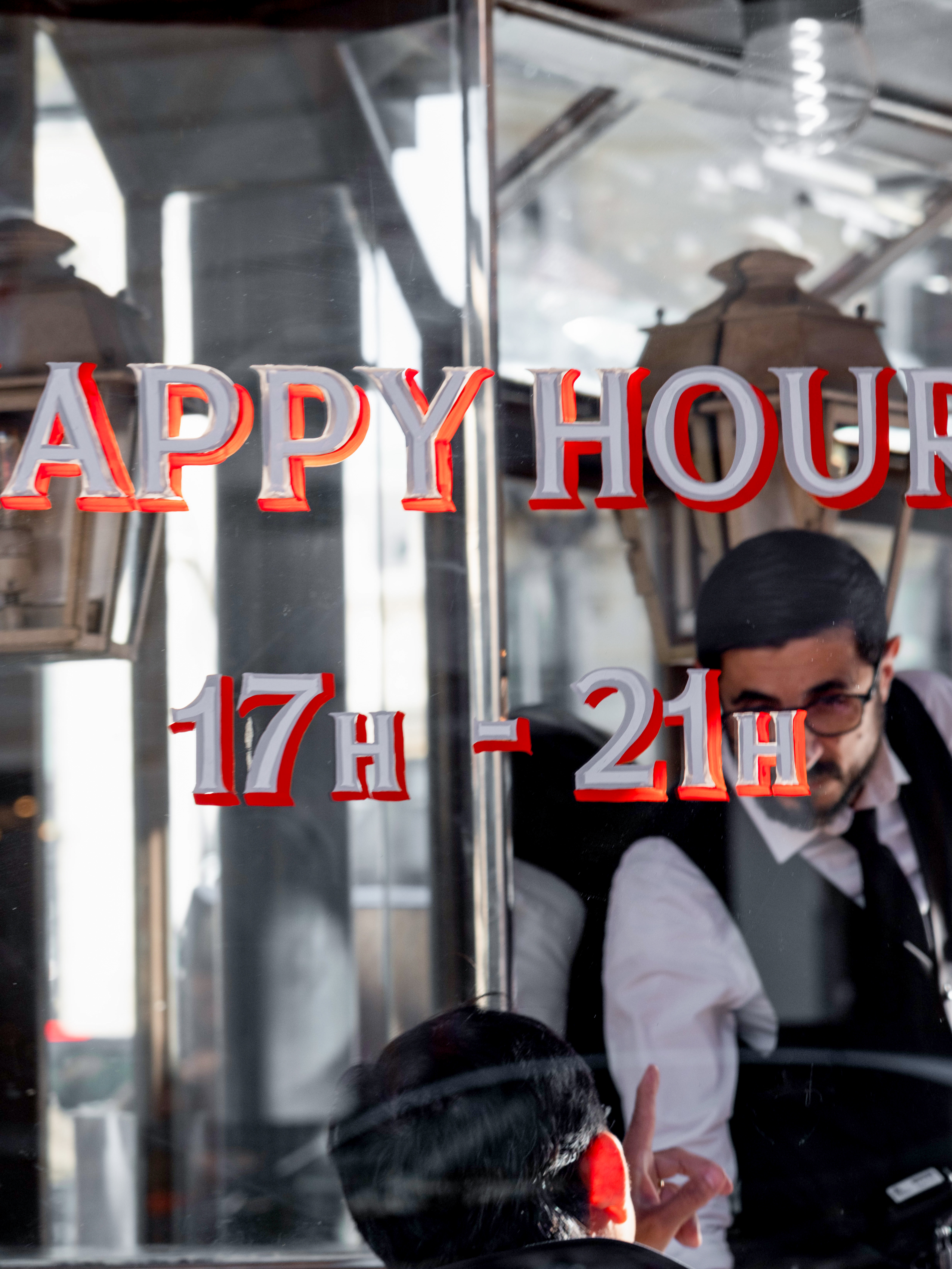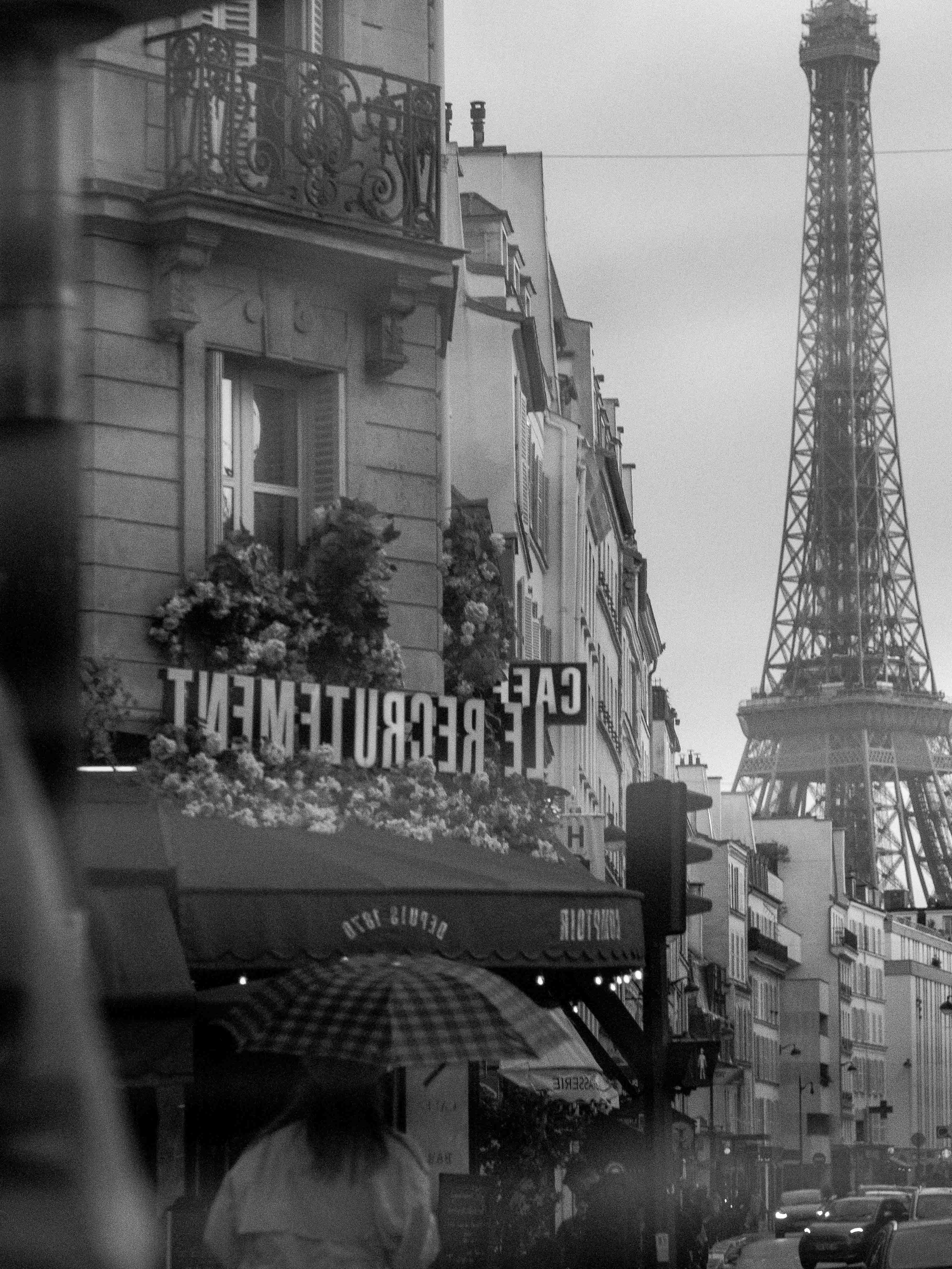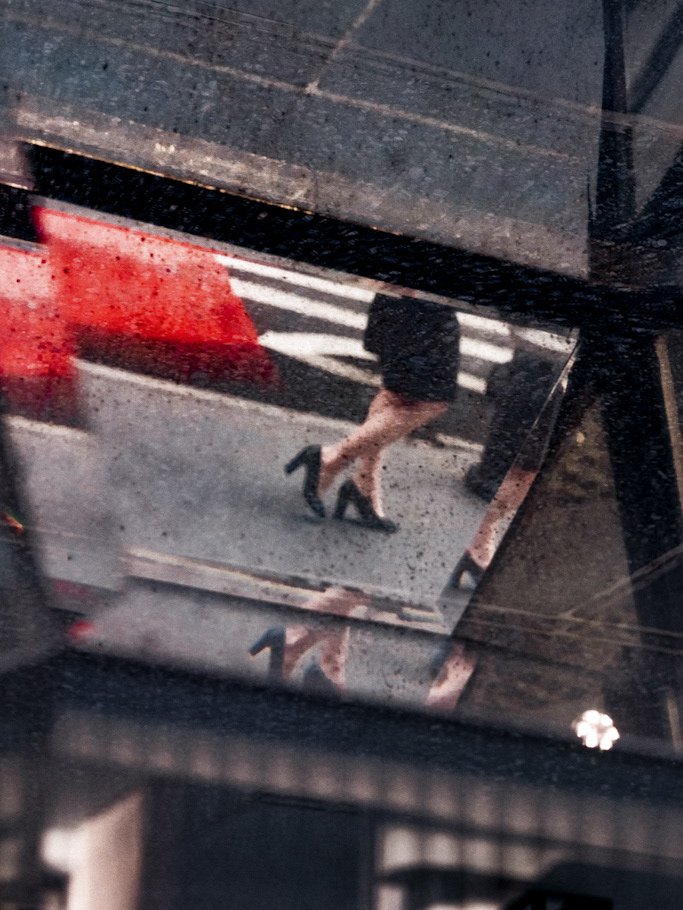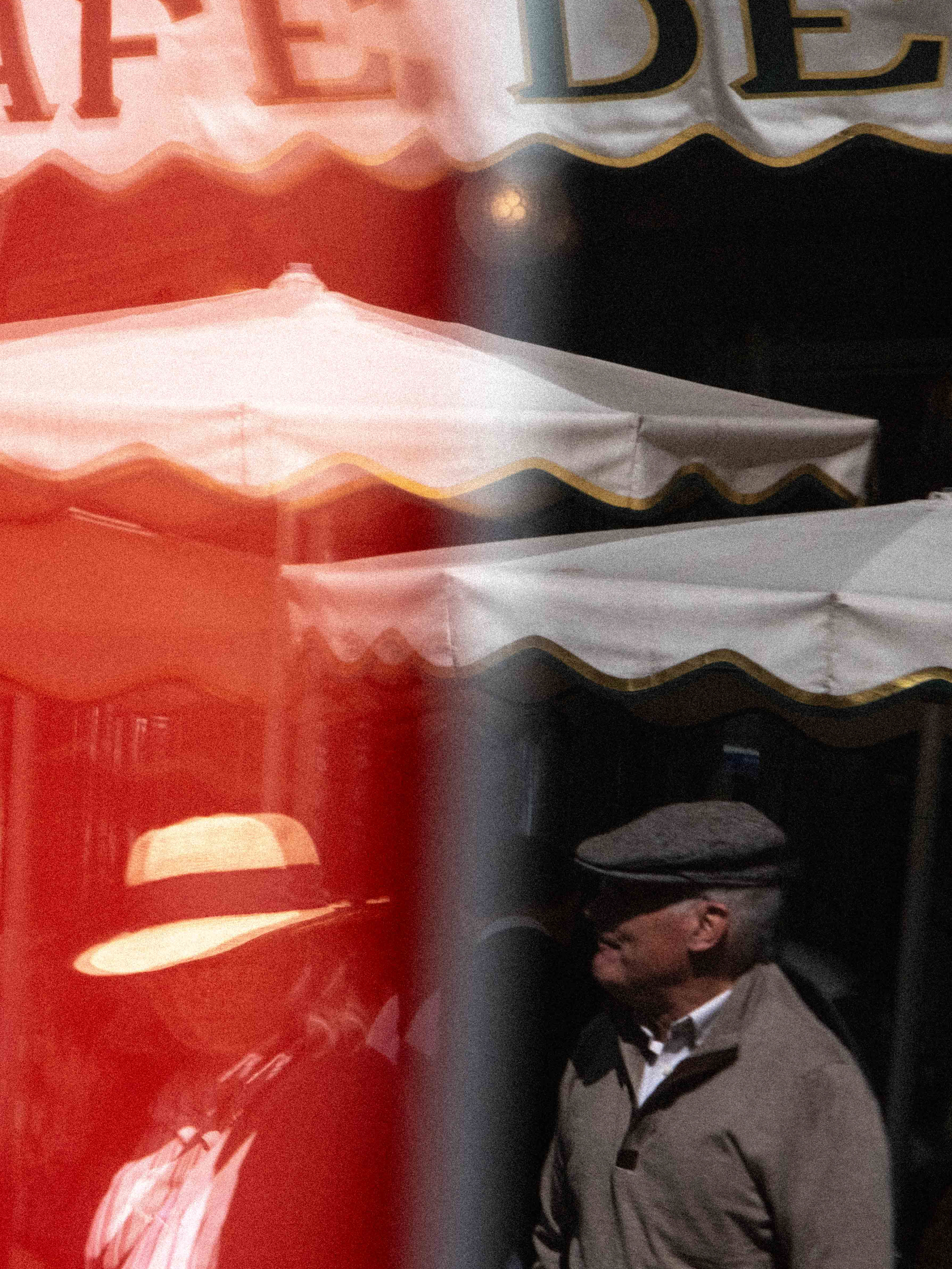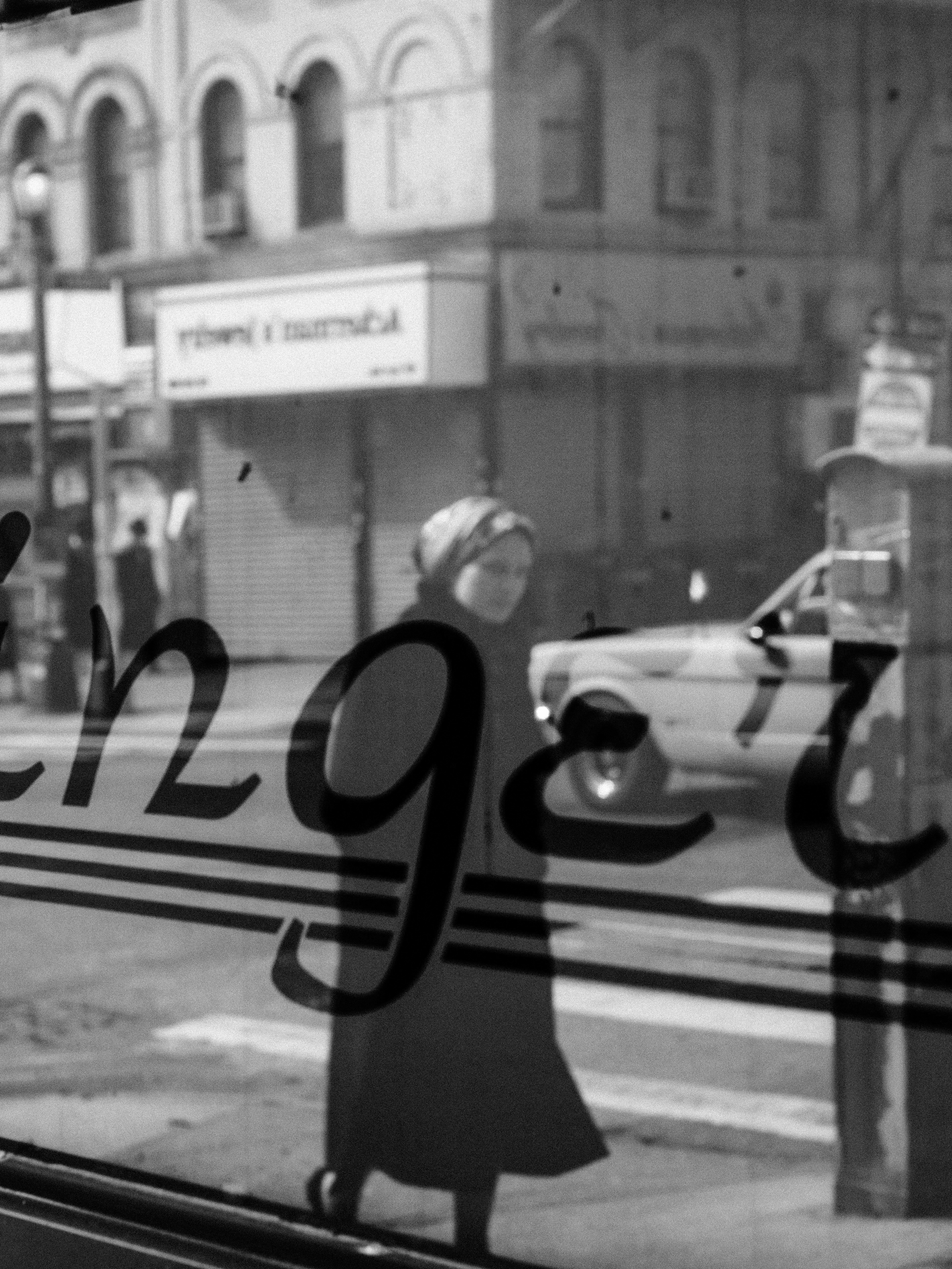







Sometimes when I’m feeling stuck—or just bored—with my photography process, I turn to double exposures. There’s something about them that allows for a certain freedom. Instead of waiting for the perfect subject to walk through a perfect reflection, I can still shoot that window or texture, and then turn to the street to find a subject who should have been there. Boom—snap a shot of them in a different setting, and suddenly the frame feels whole.
Instead of camping out in front of a window for hours, waiting and hoping, I can take the photo, store it, and then add to it later. Two imperfect moments, merged into something new.
When I first started experimenting with double exposures, it reignited that beginner’s mindset—the one I hadn’t felt in a long time. I felt reborn creatively, re-inspired, with fresh motivation to shoot and just be in the world again, looking for beauty. It reminded me that photography doesn’t always need to be serious. It can also be fun.
When you first fall into a new passion, there’s that honeymoon phase. You’re discovering, learning, and just enjoying it. But the more experience you gain, and the more seriously you start to take your work, the higher the stakes feel. That childlike joy can get lost. Play gets replaced by pressure. And when that happens, creativity starts to shrink.
Double exposures—and really any kind of experimentation—bring me back to that earlier state. That looser, more curious version of myself. And that state? That’s where the best photos come from. That’s where living comes from.
At their best, double exposures feel like dreams. They add complexity that pushes beyond normal reflections. Suddenly, a person merges with a skyscraper. A poster dissolves into a mannequin. Layers overlap, distort, become something else entirely. Reflections on top of reflections—alternate worlds that couldn’t exist in real time, but feel real all the same.
Sometimes I line the shots up carefully: a silhouette, then a texture. A window, then a face. Other times, I shoot fast and let the images fall into each other. I don’t always know how they’ll come out—and that’s the point. The uncertainty keeps me curious. It pulls me back into instinct.
Not every frame works. A lot don’t. Some end up too chaotic, the layers competing instead of complementing. You have to be selective. Like cooking—too much seasoning and the dish loses its core. But when the balance is right, when the two images fuse with just enough tension and clarity—it feels like alchemy. Like the camera revealed something I never could’ve seen alone.
Double exposures aren’t for every project. And I don’t rely on them. But when I get too rigid, too obsessed with “good” photos, I’ll shoot a roll—or a digital set—just to reset my eye. It’s like jazz improvisation for the lens. Looser. Weirder. More honest.
Experimentation keeps the work alive. Whether it’s light leaks, slow shutter motion, film burns, or double exposures—I need those moments of uncertainty. They remind me that this isn’t just about having a portfolio. It’s about staying present in the process.
So if you’ve never tried it—do it. Layer two images that don’t belong together. Break the frame. Blur the rules. Get weird. Not everything has to make sense. In fact, your best work probably won’t.
Because the photos that hit the hardest? They’re not always the sharpest or cleanest. They’re the ones that surprise you. That break the mold. That show you something you didn’t even know you were looking for.
